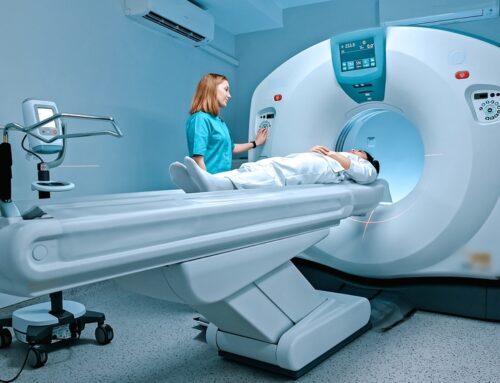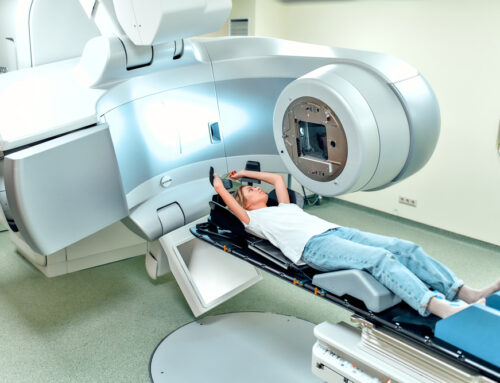Brachytherapy radiation is a specialized form of cancer treatment that involves delivering radiation directly to the tumor site. This internal radiation therapy can provide several benefits for patients with certain types of cancers, but like any medical treatment, it comes with both pros and cons. In this article, we’ll explore the key advantages and potential drawbacks of brachytherapy to help you better understand how it works and whether it might be an appropriate option for your treatment.
What is Brachytherapy?
Definition
Brachytherapy is a type of internal radiation therapy used to treat various cancers, including prostate, cervical, breast, and other localized tumors. Unlike external beam radiation, which delivers radiation from outside the body, brachytherapy involves placing a radioactive source directly inside or close to the tumor. This technique allows for a targeted delivery of radiation, which is crucial for treating tumors without causing unnecessary damage to surrounding healthy tissue.
How it Works
Brachytherapy delivers high doses of radiation directly to the tumor using small, sealed radioactive sources. These sources can be implanted directly into or near the tumor or placed temporarily in the body during treatment. By doing so, brachytherapy enables a precise, concentrated dose of radiation, which reduces the exposure of surrounding healthy tissues to harmful radiation. This makes it an effective method for treating cancers that are localized or close to critical organs.
Pros of Brachytherapy
High Precision
One of the main benefits of brachytherapy is its ability to deliver high-precision radiation directly to the tumor. The radioactive sources are placed very close to the tumor, minimizing the risk of harming healthy tissues nearby. This precision is particularly important when treating cancers in sensitive or difficult-to-reach areas, such as the prostate or cervix. The targeted nature of brachytherapy helps to maximize the treatment’s effectiveness while minimizing collateral damage to surrounding healthy cells.
Minimally Invasive
Brachytherapy is considered minimally invasive when compared to other treatment options such as surgery or external beam radiation. Since the radiation is delivered internally, there is no need for large incisions, and the procedure generally requires only small, localized incisions or insertions. This means less physical trauma, quicker recovery times, and fewer complications for patients. The reduced need for general anesthesia and lengthy hospital stays can make the treatment more appealing to some patients.
Shorter Treatment Time
Compared to traditional external beam radiation therapy, brachytherapy often requires a much shorter treatment duration. External beam radiation typically involves multiple sessions over several weeks, while brachytherapy can usually be completed in a shorter time frame. For example, some brachytherapy procedures, particularly for prostate cancer, can be completed in one or two outpatient visits. This shorter treatment schedule is more convenient for patients and reduces the time they need to take off from work or other daily activities.
Fewer Side Effects
Because brachytherapy focuses the radiation directly on the tumor, it typically causes fewer side effects than external radiation. In external beam radiation, healthy tissues surrounding the tumor can be damaged, leading to a wider range of side effects, such as skin irritation, fatigue, or gastrointestinal issues. In contrast, the localized nature of brachytherapy means that these side effects are usually less severe or less frequent. Additionally, the intensity of radiation is more easily controlled, which can lead to fewer long-term side effects compared to other forms of radiation therapy.

Cons of Brachytherapy
Potential Side Effects
While brachytherapy generally causes fewer side effects than external beam radiation, it is not without potential risks. Common side effects include skin irritation, fatigue, and discomfort at the implant site. Depending on the type of cancer being treated and the location of the tumor, some patients may experience temporary urinary or bowel problems, particularly if the radiation is administered near sensitive organs. As with any treatment, side effects can vary from person to person, and it’s important to discuss these risks with your oncologist beforehand.
Not Suitable for All Cancers
Brachytherapy is a highly effective treatment for certain types of cancers, but it is not suitable for all cancers or all stages of cancer. It is typically used for localized cancers, meaning those that have not spread to other body parts. For cancers that are larger or have metastasized (spread), other treatments such as chemotherapy or surgery may be more appropriate. Furthermore, brachytherapy may not be an option if the tumor is located in an area that is difficult to access or if it is in close proximity to vital organs.
Requires Careful Planning
The success of brachytherapy depends on the precise placement of the radioactive sources. This requires detailed planning, imaging, and careful consideration of the tumor’s size, shape, and location. In some cases, the radiation oncologist may need to perform additional tests or imaging procedures to ensure the correct placement of the radioactive material. This planning phase can be time-consuming and may require multiple visits to the treatment center, which can be inconvenient for some patients.
Temporary Precautions
After brachytherapy, patients may need to follow certain precautions for a period of time. This is primarily due to the radioactive materials used in the treatment, which can emit radiation for a short period after the procedure. In some cases, patients may be advised to avoid close contact with pregnant women, young children, or anyone who is particularly sensitive to radiation. These precautions are typically temporary and depend on the type of brachytherapy used, but they are important to ensure the safety of others during the recovery period.
Brachytherapy vs Radiation
Brachytherapy Radiation Side Effects
When comparing brachytherapy to external beam radiation, one of the most notable differences is the potential side effects. While both therapies aim to target and destroy cancer cells, external beam radiation often has a wider impact on surrounding healthy tissue due to the nature of the treatment. As a result, patients undergoing external beam radiation may experience more pronounced side effects, such as skin burns, fatigue, and digestive issues. Brachytherapy, on the other hand, offers more targeted radiation delivery, which often leads to fewer and less severe side effects, especially for cancers that are well-suited to internal radiation therapy.
Important Considerations
Individualized Treatment Plans
It’s important to note that the suitability of brachytherapy depends on a variety of individual factors, including the type and stage of cancer, the patient’s overall health, and the location of the tumor. Not all patients will be candidates for brachytherapy, and it should be considered as part of a personalized treatment plan developed in consultation with a qualified oncologist. The oncologist will consider these factors to determine whether brachytherapy is the right choice for the patient.
Potential Risks and Benefits
As with any medical treatment, brachytherapy has risks and benefits that must be carefully weighed. Patients should have an open and honest conversation with their healthcare team about the potential risks, benefits, and alternatives to brachytherapy. Patients can make a more informed decision about their care by discussing their options and considering factors such as the likelihood of success, possible side effects, and the overall treatment plan.
Brachytherapy radiation is a promising treatment option for certain cancers, offering high precision, minimal invasiveness, and reduced side effects. However, it is not without its challenges and limitations. Understanding the pros and cons is essential for patients to make an informed choice about their cancer treatment options.
Explore Your Treatment Options with Experts
Brachytherapy radiation offers precision and fewer side effects, but it’s not suitable for all cancers. Contact us today at Northwest Cancer Clinic to discuss your options and receive personalized guidance. Our team is here to support you throughout your treatment journey.






